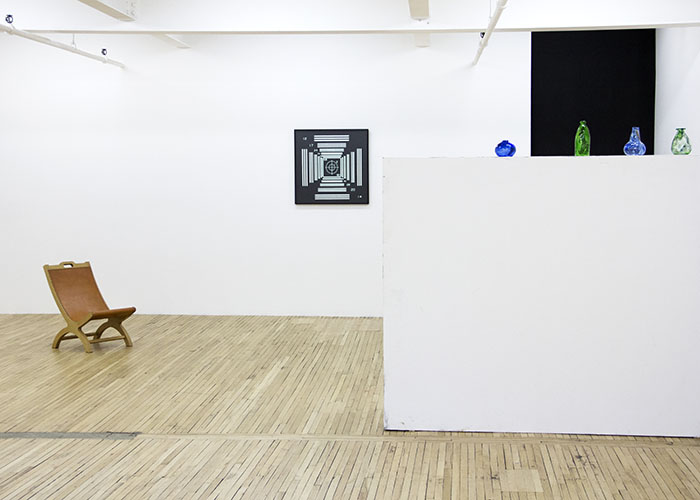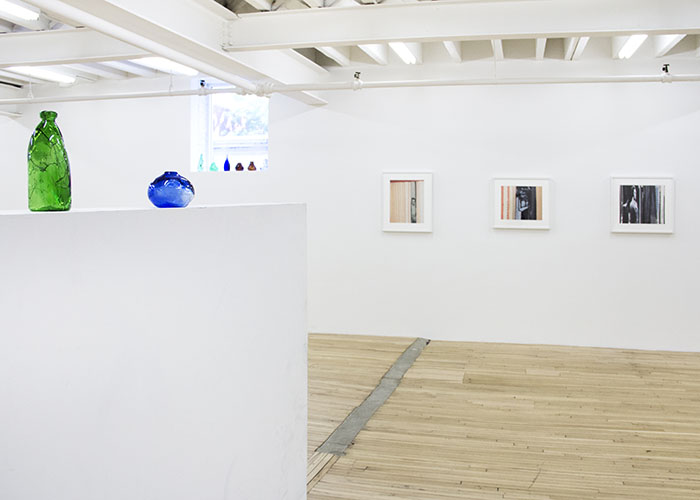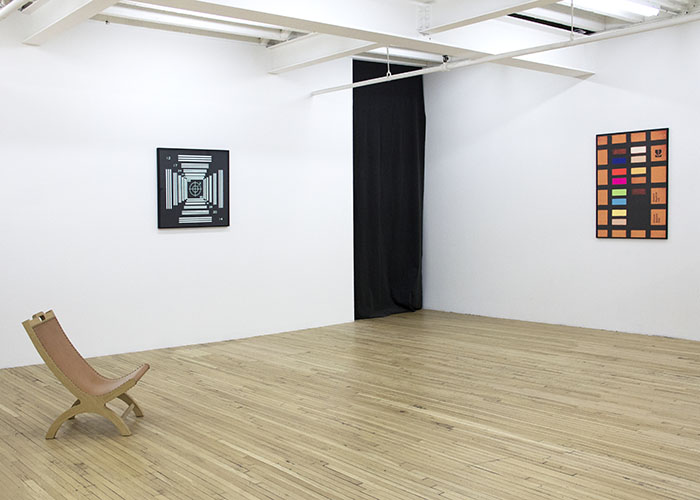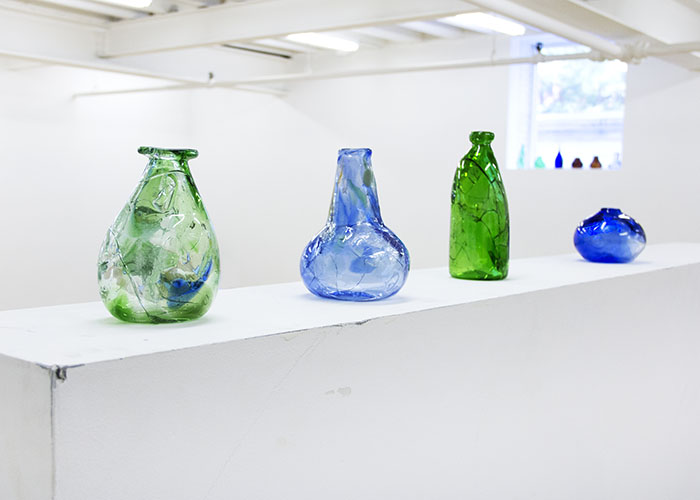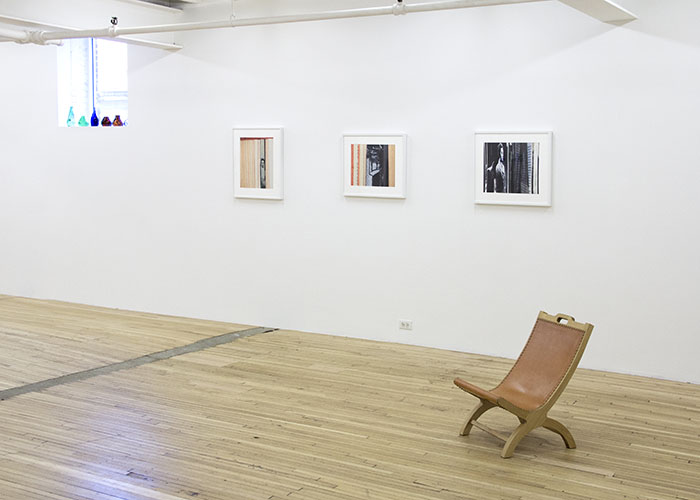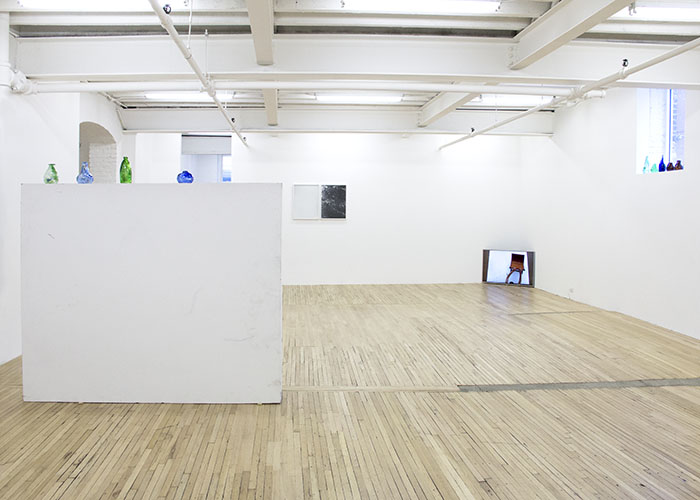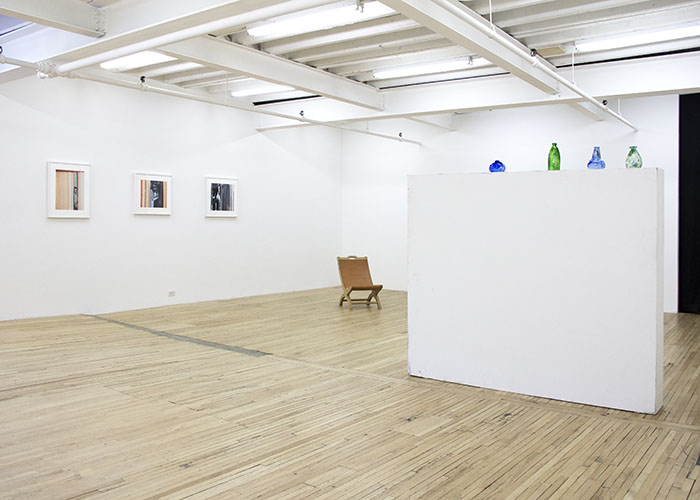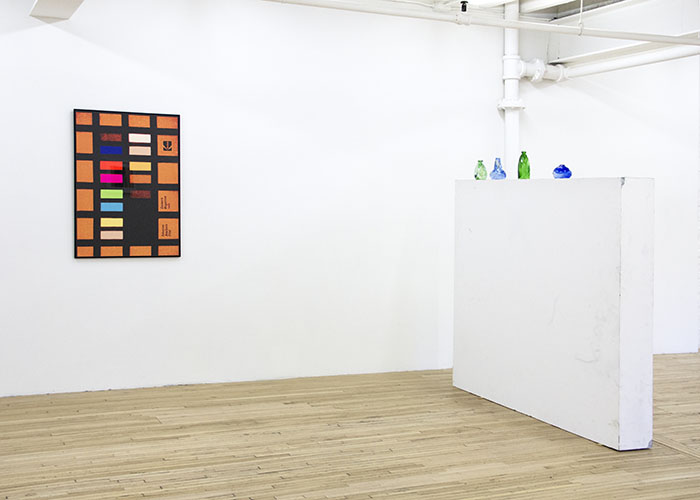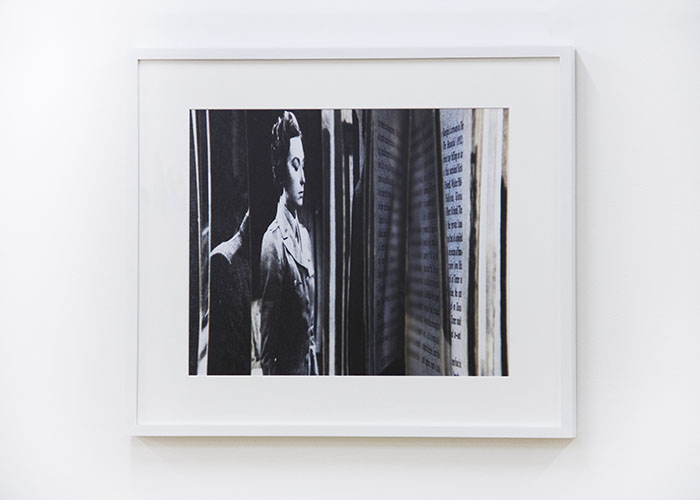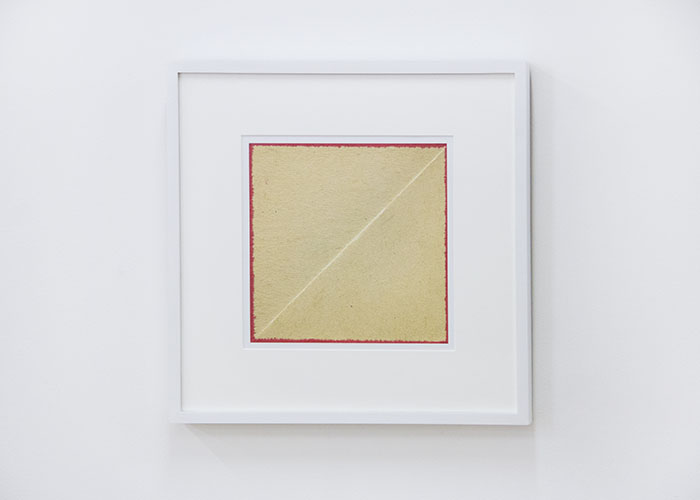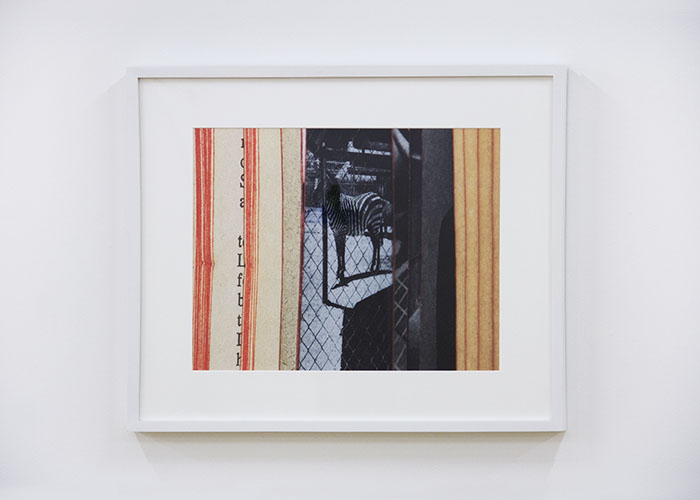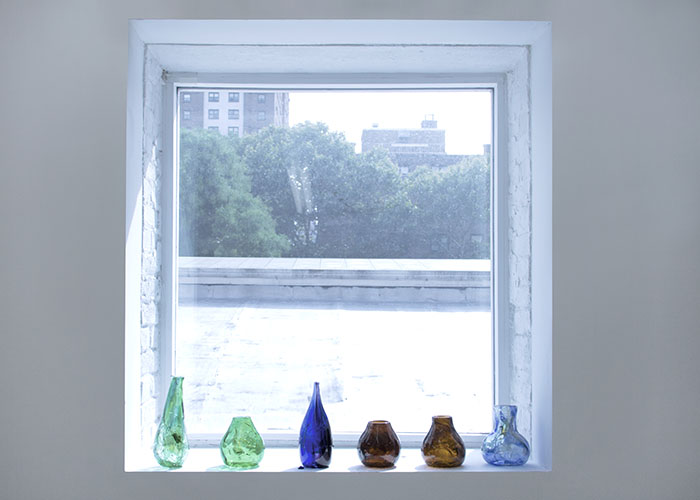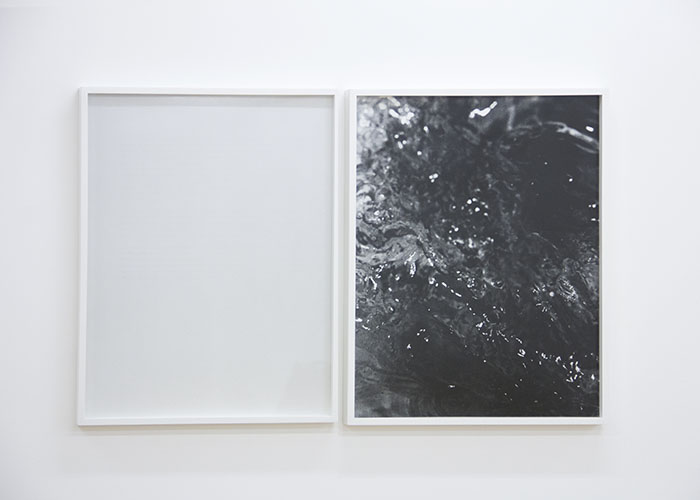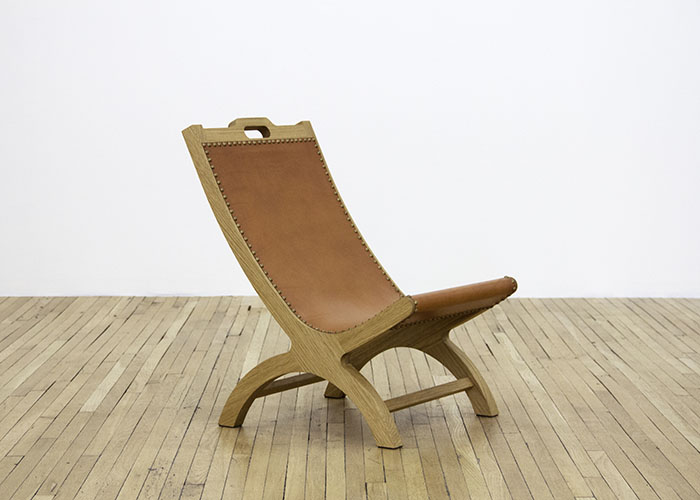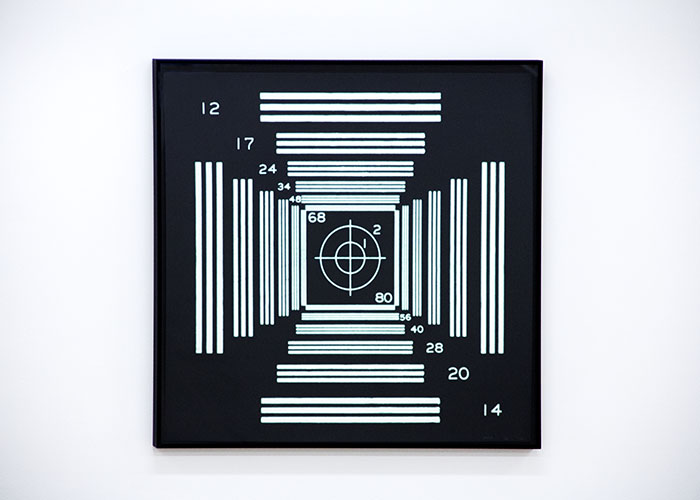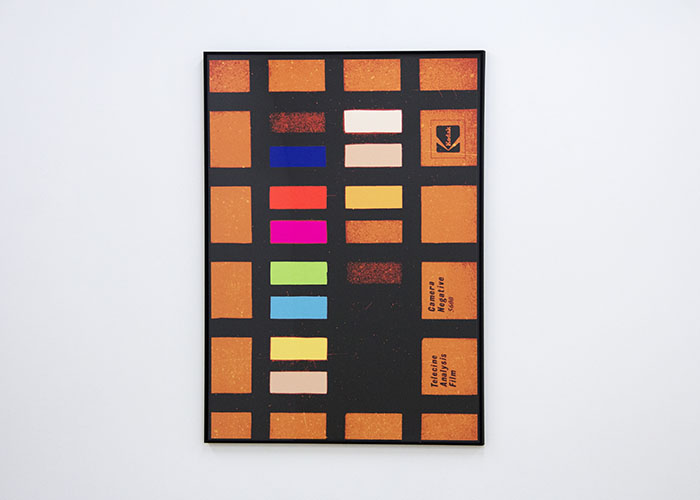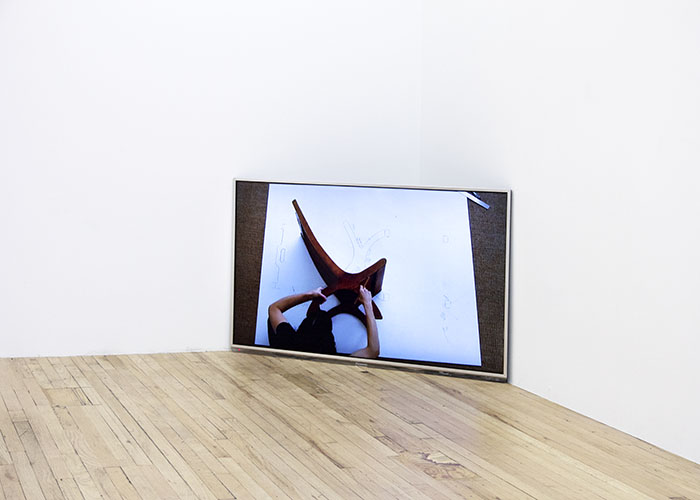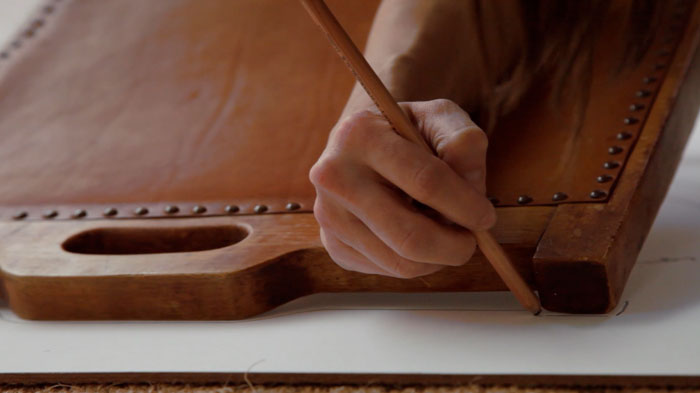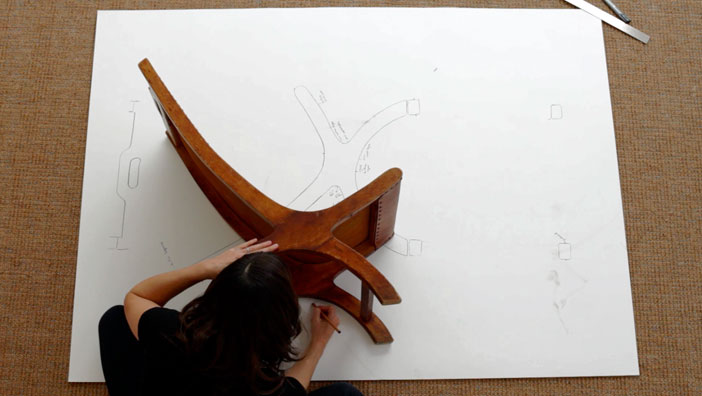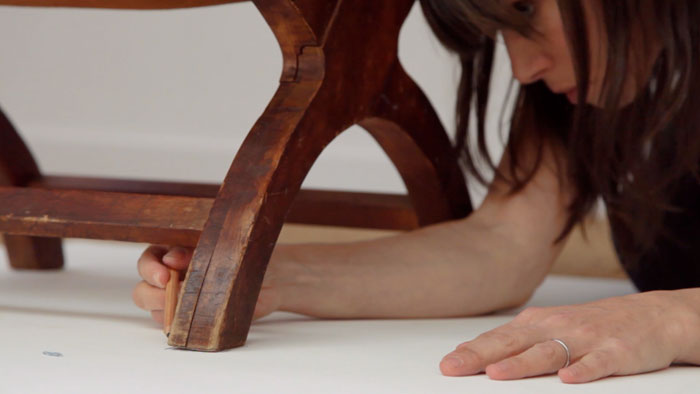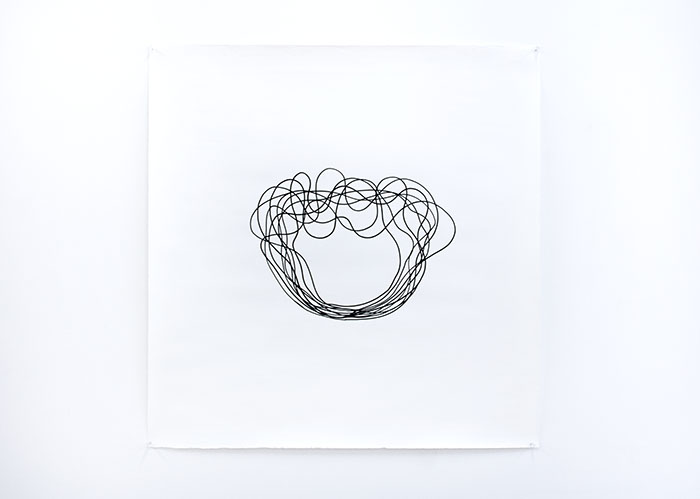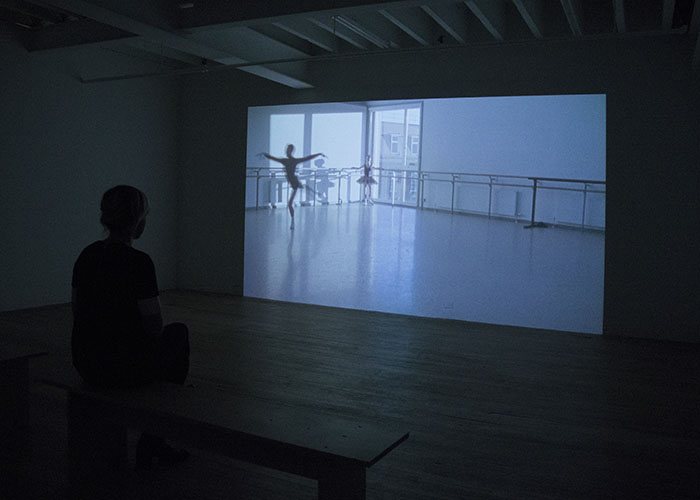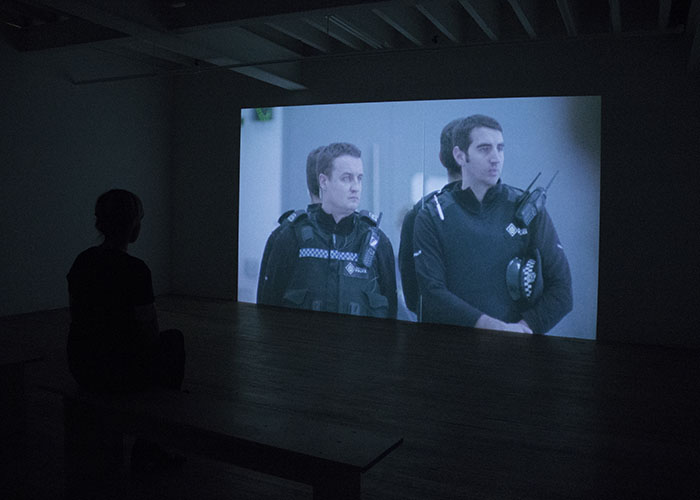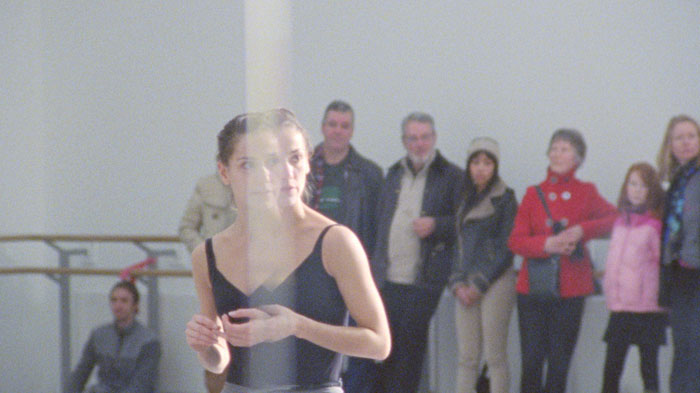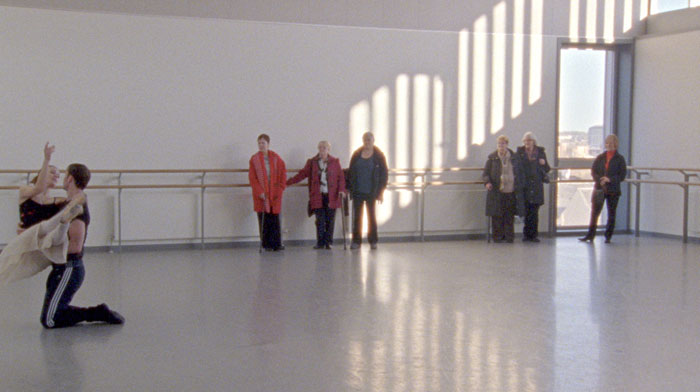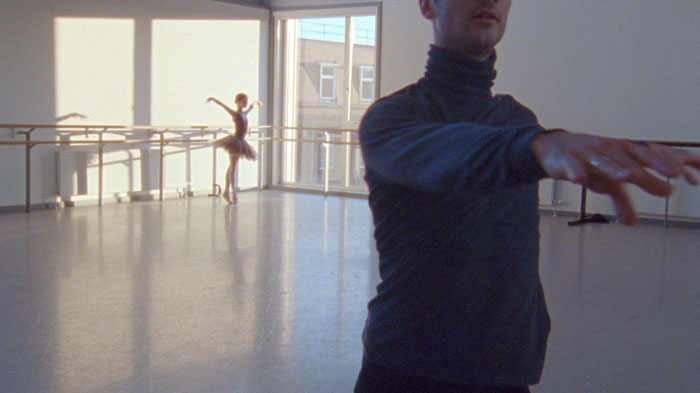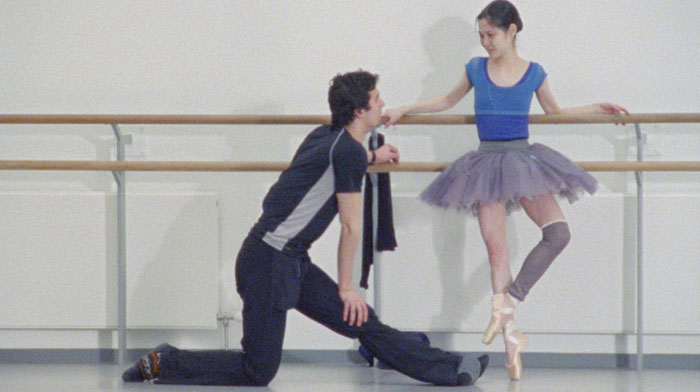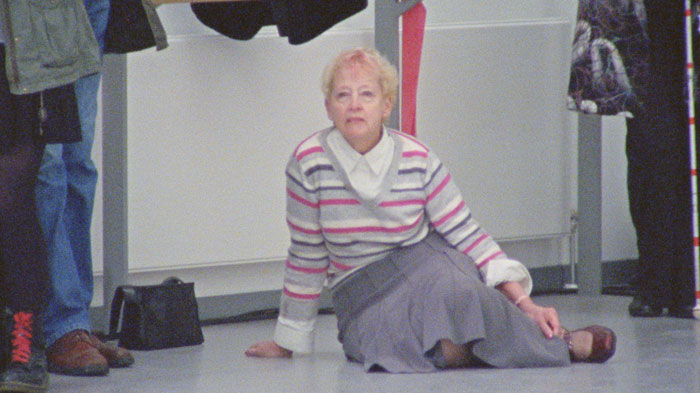Infinite Tuning / Rosalind Nashashibi, Lovely Young People, (Beautiful Supple Bodies): Erica Baum, Matthew Buckingham, David Horvitz, Yve Laris Cohen, Jill Magid, Boru O'Brien O'Connell, Lucy Raven
The title of the exhibition is that of a work by Matthew Buckingham – a recording of an orchestra alternately warming up and tuning. The anticipation that these looping sounds of preparation generate is emphasized by an absence of a stage or musicians. “The concert never begins; the music does not take form.” Infinite Tuning focuses on objects and ideas produced from within a space that precedes a presentation of a completed form. Often practical in function yet rarely seen – the dummies of a finished object used for training or rehearsal, notes and placeholders for text and image, and test patterns for optimal viewing – exist in an alternative yet proximate state.
In her video, Tracing Albers’ Chair, Jill Magid traces the contours of a ‘Butaca’ chair, which was also traced by Joseph Albers’ in order to copy the design by Clara Porset for Luis Barragán. Magid continues a lineage of replication and authors the chair on view in the gallery. Her emphasis on appropriation as a form of homage, a notion embraced by both Albers and Barragán, allows for the endless reproduction of a singular design, image, or idea.
Two screen-prints of vintage Kodak test patterns by Lucy Raven suggest an entryway into the history of a vanishing technology. These patterns, rarely seen by anyone other than the projectionists, were once used to calibrate film projectors prior to screening a film. Having lost their original utility, the images reproduced by Raven use a palpable method of printing with a single screen for each color, placing emphasis on the composition and reorganizing the way in which these patterns are made visible.
The freestanding wall by Yve Laris Cohen was intended to be a prop in his recent series of performances in the 2014 Whitney Biennial. Since all, but the first performance, were cancelled by the museum the wall remains a patient understudy. This minimal gesture is characteristic of Laris Cohen’s work in which he repurposes the walls and floors of theatrical and exhibition spaces. Accompanying the wall is a text by the artist, available on request.
Hand-blown glass vases by David Horvitz are dispersed throughout the gallery. Made from sea glass of different densities each vase develops an irregular shape due to its unstable molecular makeup. The glass of each vase is collected from numerous locations and displays the marks of its own movement and history. Reformed as a whole, the vases express the inherent tension of a system made of distinctive parts.
But I must explain to you how all this mistaken idea of denouncing of a pleasure and praising pain was born and I will give you a complete account of the system, by Boru O’Brien O’Connell takes its title from the first sentence of the 1914 English translation of a two thousand year old text by Cicero from which Lorem Ipsum is derived. Lorem Ipsum, an excerpted and hybridized Latin text, serves as a placeholder or filler for publishing or graphic design presentations. In O’Brien O’Connell’s work, this deeply personal text, alongside a detail of moving water, is almost entirely abstracted and, after having been submerged beneath layers of translation, alteration, and indifference, becomes a purely visual form.
The obscured texts and figures that peek out of the pages of books photographed by Erica Baum reveal the inner workings of thought, research, and reading. As Baum’s Naked Eye series exposes the countless compositional and narrative possibilities of fanning out the pages of a book, Blanks focuses on the folded corner of a single book page. The content of what is beyond the edges of Baum’s image is left unknown, yet the bookmark or placeholder indicates the intent of return and contemplation.
ROSALIND NASHASHIBI
Lovely Young People, (Beautiful Supple Bodies)
As a counterpart to the group exhibition Infinite Tuning, Murray Guy presents a solo presentation of Rosalind Nashashibi’s film Lovely Young People, (Beautiful Supple Bodies), 2012.
Made with the Scottish Ballet in their Glasgow studio, the film features the Company dancers in private rehearsal. As the camera scans the mirror-lined walls, revealed are the manners and movements of the dancers as well as the reactions of an invited public audience whose audible comments form a key part of the soundtrack. Nashashibi’s interest lies in these interactions as well as the perception of people outside the world of dance on performance and bodies that they would otherwise only see at a distance.
Lovely Young People, (Beautiful Supple Bodies) was commissioned by Glasgow International Festival of Visual Art and Scottish Ballet.
